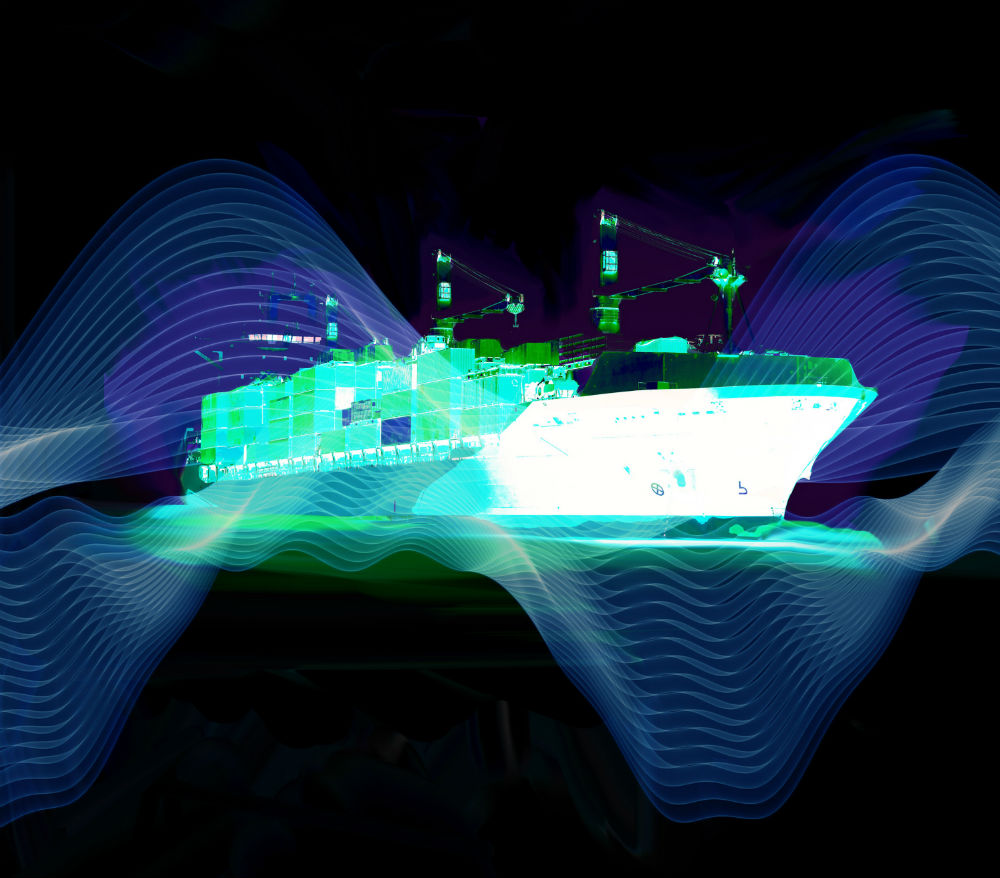Fraunhofer researchers are to present a ‘Mechanical Simulation Toolbox’ simulation tool at the SMM trade Fair in Hamburg this week that allows shipbuilders to easily design and develop adaptronic systems, that reduce engine vibrations, step-by-step on the computer.
Powerful ship engines make everything vibrate, including the connectors on the engine, the high-pressure pipes for fuel and lubricating oil, the drive train, stairs, steps, floor and ceiling made of steel. The vibrations are also transmitted to the entire hull. This puts tremendous stress on the components of ships.
Adaptronic systems help to reduce the vibrations. The Fraunhofer Institute for Structural Durability and System Reliability LBF (Fraunhofer LBF) has written a simulation software with which these systems can be developed efficiently. To date, there has not been an integrated development process for such systems. Corresponding software has so far only been available as isolated solutions. Therefore, this tool is unique to the market.
The toolbox is a result of the Hessian research promotion program LOEWE (the State Offensive for the Development of Scientific and Economic Excellence). Partners of the Institute in the adaptive systems project LOEWE Center AdRIA (Adaptronic – Research, Innovation, Application) in Darmstadt are the Technical University and the Darmstadt University of Applied Sciences.
With the software, passive and adaptronic systems for vibration reduction can be simulated on the computer. In passive systems, no additional electrical energy is added. They work solely through their structure. Springs and additional materials, for example, reduce the vibration of bridges and engine or transmission mounts by modifying the transmission paths.
However, these systems have limits which are set precisely for mobile applications, since they cannot be arbitrarily large and heavy. That is where adaptronic systems come into play. These components convert supplied electrical energy into mechanical energy, thereby actively counteracting the vibrations. This makes them more efficient, despite their lower weight and smaller size.
The toolbox of the Fraunhofer LBF simulates the vibrating and the required adaptronic system. The simulated system can be started up with simple models and made more complex at a later time.
Heiko Atzrodt, researcher at the Fraunhofer Institute for Structural Durability and System Reliability LBF in Darmstadt and the managing director of the Fraunhofer Alliance Adaptronics, in which a total of six Fraunhofer Institutes are organised said: “At the LBF, we have been dedicating ourselves for more than 15 years to adaptronic systems and their simulation. We work very closely with the industry. Adaptronics is progressively gaining in importance and the demand for a generally available simulation software has been increasing steadily in recent years.”
Ship Efficiency Review News
To contact the reporter responsible for this article, please email editor@fathom-mi.com































